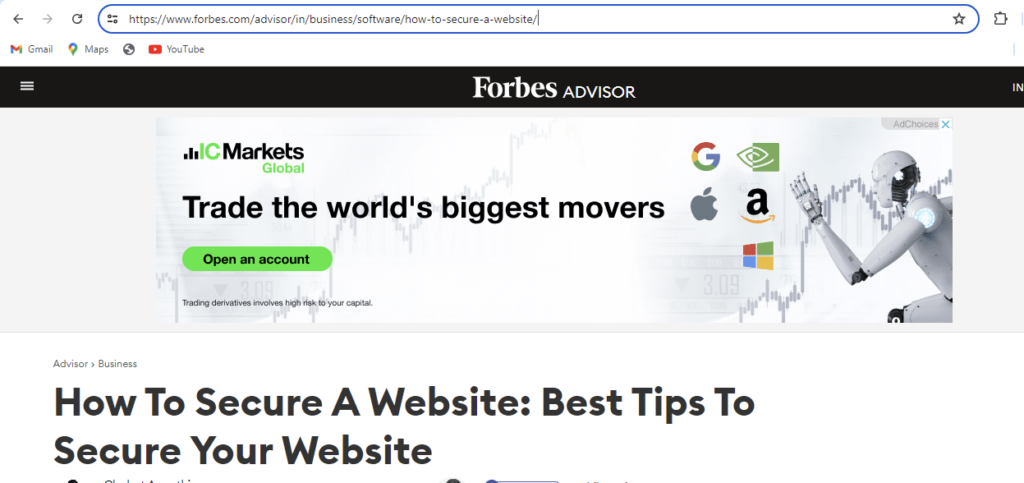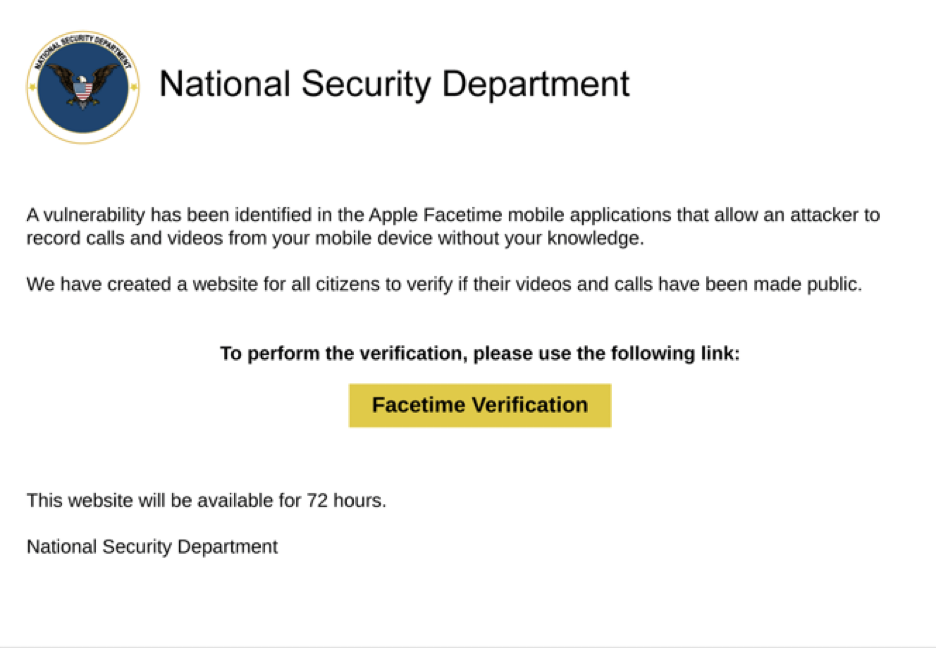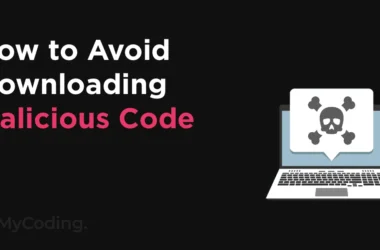Nowadays, getting files from the Internet has become more like a routine for many Internet users. Software, documents, and media are accessed with ease nowadays and can also be used conveniently. This convenience comes with its own set of risks. Every file, program, or application that you download and install may contain a virus that negatively affects the operating system and steals, deletes, or corrupts your data. However, there are ways one can protect themselves against these risks that technology brings about. In this article, we will examine real-life strategies for safer browsing, methods to find the risky link URLs and how to avoid downloading malicious code.
Recognizing Unsecured Websites
A computer user needs to be able to identify unsecured websites so that the user can avoid downloading malicious code. Unsecured websites do not have the measures for protection against attackers. After accessing a website, there is normally the risk that the site or, indeed, the computer that is being used may be infected with a virus, and hence, it’s good to investigate the level of security of the site. Among the main features that help to define the website as secure is the utilization of the SSL certificate.
Importance of SSL Certificates
The standard tool for achieving such a connection is called SSL (Secure Sockets Layer) certificates which play the role of protecting a communication or exchange between your browser and the website. Websites with SSL certificates have URLs that begin with “https://”. Instead of accessing websites that use “http://,” it is advisable to go for the ones that use “https://.” This represents an SSL to show that the site encrypts data during the transmission so that the attackers cannot intercept it. This encryption can protect personal details like user names and passwords, credit card numbers, and personal details from the view of hackers. Also, as part of the control based on the SSL, the padlock icon at the bottom of the browser attests to a secure connection. Always check such signs before keying in any of your details at any site to avoid the prevalence of identity theft. Below is a screenshot showing a secure website URL bar with “https://.”

Signs of an Unsecured Website
- No “https://” in the URL
- Absence of a padlock icon in the address bar
- Poor website design and numerous popup ads
- Suspicious or irrelevant content
Secure Browsing Tips
| Tip | Description |
| Use HTTPS | Ensure the website URL starts with “https://” |
| Avoid Suspicious Links | Hover over links to check the URL before clicking |
| Keep Software Updated | Regularly update your operating system and applications |
| Use Advanced Email Security | Employ tools to scan emails for potential threats |
| Block Popups | Use browser settings or extensions to block popup ads |
Filtering Traffic at the DNS Level
It is obviously realized that filtering traffic at the DNS level may have an impact on access to malicious sites. DNS filtering functions is based on the fact that when a computer tries to access a DNS to download its contents, the DNS server will return a list of blocked websites and prevent computers from accessing these websites, as it is used as the initial firewall against merging cyber threats. It makes total sense to achieve similar results by using DNS filtering to ensure that your device is never even able to get to the sites that have already been flagged as unsafe, thereby lowering your chances of getting infected with any form of malware. This style of filtering not only increases the protection of the device and the data contained therein but also provides a boost to the browsing experience in the process of excluding opportunities for the occurrence of phishing attacks.
Blocking Popup Ads
Popup advertisements are quite often primary carrier for malware distribution. Most of these advertisements are embedded with some code that will infect your device the moment you click on them. These advertisements usually load on websites that that are either not encrypted or are hacked, and dissembling ads might look like genuine alerts or promotions. Using browser settings or extensions to block pop-ups can reduce this risk significantly. When you enable the firewall and turn off the popup ads, you can be sure that you will not receive constant interruptions, and, at the same time, you can prevent your device from possessing malicious materials. One simple way is to use third-party tools such as ad blockers, while other possible solutions include popup blockers that are implemented in most browsers.
Identifying Malicious Links
Identifying malicious links is another important step in protecting your device from harmful software. Such links can be sent through emails, social networks, or displayed on websites. They are mostly intended to deceive the user into downloading a virus or sharing personal data. To identify these links, move the mouse over to check the real address and look for other signs, such as spelling mistakes or special characters that appear like real sites. Do not trust shortened URLs, and do not click on them unless you check the URL’s destination using the link expansion services. Encrypt links using tools like VirusTotal to check the links for virus and malware presence. Always be cautious of unexpected links, especially from unknown senders, and even verify unexpected links from known contacts if they seem out of context. Using the mentioned measures may help to avoid becoming a victim of cyber criminals.
Advanced Email Security
Emails can carry malicious links. They are one of the most popular ways hackers use to infect systems. Cybercriminals use phishing emails to spread these malicious links with the hope that the recipient will be tricked into clicking on them. Certain security measures can be implemented in emails, such as spam filters and email scanners. These measures assist in detecting and deleting suspicious emails before they get to the inbox of the recipient. Spam filters analyze incoming emails to detect known threats, while email scanners check attachments and links for malicious content. Always be careful of emails from unknown senders and avoid clicking on links provided. Messages that were previously trusted from certain domains can also be hacked, so the sender of any unfamiliar message should be checked. With the help of such techniques, you can stop your inbox from becoming a gateway to malware on your computer. Below is a screenshot of an example of a typical spam email.

Avoiding Free Software Downloads
Free software can be dangerous because of what it actually hides inside the source code. This is because despite free software not being always unsafe, most of the free applications contain third-party advertisements or other unwanted programs that are harmful to the computer of the users. The free software can infect your device and steal your personal information. Taking time to read the comments left by other users, where there are ratings, and downloading them from the websites of the original developers or authorized sellers can minimize these threats.
Software Patches
The software patches and updates are crucial when it comes to addressing loopholes that malicious codes may exploit. There is always a group of hackers around waiting for a vulnerability to come through the software security. By doing that, you will not only cover these accesses but also protect your device from a range of potential threats associated with outdated apps and OS. When installing or updating a specific software, one should limit downloading updates from other channels but from authenticated sources such as the official website of the software provider or via the updates tab. The patching automation can help identify and acquire the latest updates as soon as they are released, allowing the system to be up to date without further user intervention. It is very important to ensure that you have the right versions of your software since this is one of the ways that you will be able to be secure from the increasingly common attacks by malware.
Managing Suspicious Emails
Some of the suspicious emails can be a great danger to any device that you are using. Thus, it became possible for cybercriminals to utilize email as a means of delivering malware, phishing, and other malicious things. These emails may originate from genuine senders, establishing a challenge to identify the threat. There is a need to be extra careful while working with emails, particularly those received from unfamiliar individuals or containing shocks.
Utilizing Advanced Email Security
Apart from spam filters, it is possible to manage other suspicious emails through other sophisticated email security tools available so that you can handle them more efficiently. These tools can scan the content of the emails and any attachments for threats, which can add a lot of security. Most modern anti-phishing and anti-malware solutions employed in corporate email systems use machine learning and reputation-based filters that, learning from previous cases and experience, can identify new and more complex phishing attempts and spam messages. With such tools in place, one is able to effectively screen out the emails harboring such links before they get to the inbox, thereby minimizing one’s exposure to viruses. Further, the mentioned tools can cause real-time alerts and comprehensive reports that will help in awareness regarding threats and how to handle them.
Keeping Software Updated
When software is updated, it includes new security measures and corrected glitches and vulnerabilities. Programmers often publish new versions to fix the existing flaws that hackers can take advantage of. Some of the ways through which you ensure that your device is protected from new and emerging threats include ensuring that your email clients, operating systems, and other applications are updated. This is another benefit of using automatic updates since it allows the software to be updated without necessarily having to do it manually. Updates not only increase the level of security but also make your software run better and be less problematic, making the experience of using the product easier and safer.
FAQs
How can I avoid downloading malicious code?
To avoid downloading malicious code, visit secure websites that starts with “https://” in their URLs. Also, avoid clicking on suspicious links, keep your software updated, and use advanced email security tools. Hover over links to check their URL before clicking them and download software from reputable sources. Lastly, enable automatic updates for your operating system and applications to ensure you have the latest security updates.
What are the signs of an unsecured website?
Signs of an unsecured website include the absence of “https://” in the URL. There is also no security padlock in the address bar and the word “ftp://” or “http//” instead of “https//.” Other signs include poor web layout, lots of Pop-up adverts, and the content of the site being either very suspicious or unrelated. Sometimes, they look unprofessional and they have too many advertising popups, which are often viruses. Always check for these signs in a bid to avoid security threats.
How can I identify a malicious link?
Some of the considerations that you can apply include mouse-over to see the URL before clicking it, looking at the URL, checking whether there are any discrepancies, such as misspelled words or special characters, and avoiding URL shorteners unless you know where they lead. In case it is unsafe, use tools known as link scanners such as VirusTotal. Do not click links that you receive in your email if they are from someone that you do not know, and also, do not click links in emails even if you know the person if the message looks suspicious.




